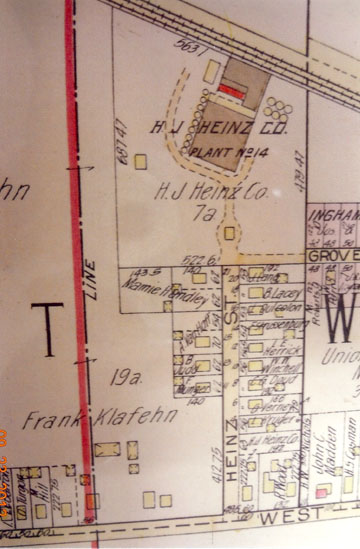Toting the tomatoes to market
Joe’s stories – old, new, mostly true
Delivering the tomatoes we raised

As noted in the raising tomatoes story (Suburban News and Hamlin Clarkson Herald September 1, 2013), our crop had to be delivered to the Heinz facility in Hilton. We didn’t have a flat bed farm truck, but fortunately our neighbors, the Conrad family, did and made it available to us. The usual routine was to pick enough for a load then get the truck, load them up and drive to Hilton. Most of the time we worked cooperatively with the Conrads, helping each other pick, alternating with a load of theirs and then a load of ours. Usually the prime pickers were my mother, Anna, and Ruth Conrad, a 20-something fit young lady who could also drive the truck.
Upon arrival at Hilton, the truck was weighed, driven to a loading dock, unloaded, weighed again and a slip issued for the tonnage of tomatoes. Sometimes there was help unloading but the farmer usually joined in to get it done quicker.
At some point it became known that German POWs were being used to help unload/load trucks so Anna decided she should go along on a delivery. Perhaps she was hoping that they were from her area of Germany and might have knowledge of the whereabouts of her three brothers and three brothers-in-law who were in the German military. She did not immediately identify herself as being German but stood quietly listening as the POWs talked. She could tell from their accents they were not from her area but she enjoyed listening in anonymity to what they were saying. Well, it didn’t take long for their conversation to turn to comments about Ruth, an attractive young lady even in her tomato stained coveralls. Speculation was made about what she might look like without the coveralls and perhaps even without any clothes.
That was it for Anna and she broke her silence by announcing in her best German that “she probably wouldn’t look much different than any of the German girls they knew”! Needless to say there was surprise and maybe a little embarrassment but it quickly gave way to the realization that here was an American they could converse with in German. Much conversation followed as they told her where they were from and learned where she had lived in Germany. For the most part they were grateful, if not happy, to be there rather than the alternatives. They felt reasonably well cared for but admitted they could use more cigarettes, which came along with the next load of tomatoes from our place. The POWs were kind of on their own since the military guard assigned to them, spent most of his time talking to the young lady who ran the scales in the weigh station.
The Heinz facility was located at the end of Heinz Street which runs north off West Avenue in the village. The 1924 Atlas map shows it was seven acres and was identified as Plant No. 14. There is some thought that the Heinz company may have built the street.
I wonder if the POWs were told that Henry J. Heinz was the son of German immigrants and had founded the company in 1876. It is interesting to note that the buildings that remain are now owned by Omega Machining Co. which was founded in 1981 by Fred Hunte, a German who immigrated here in 1953.


